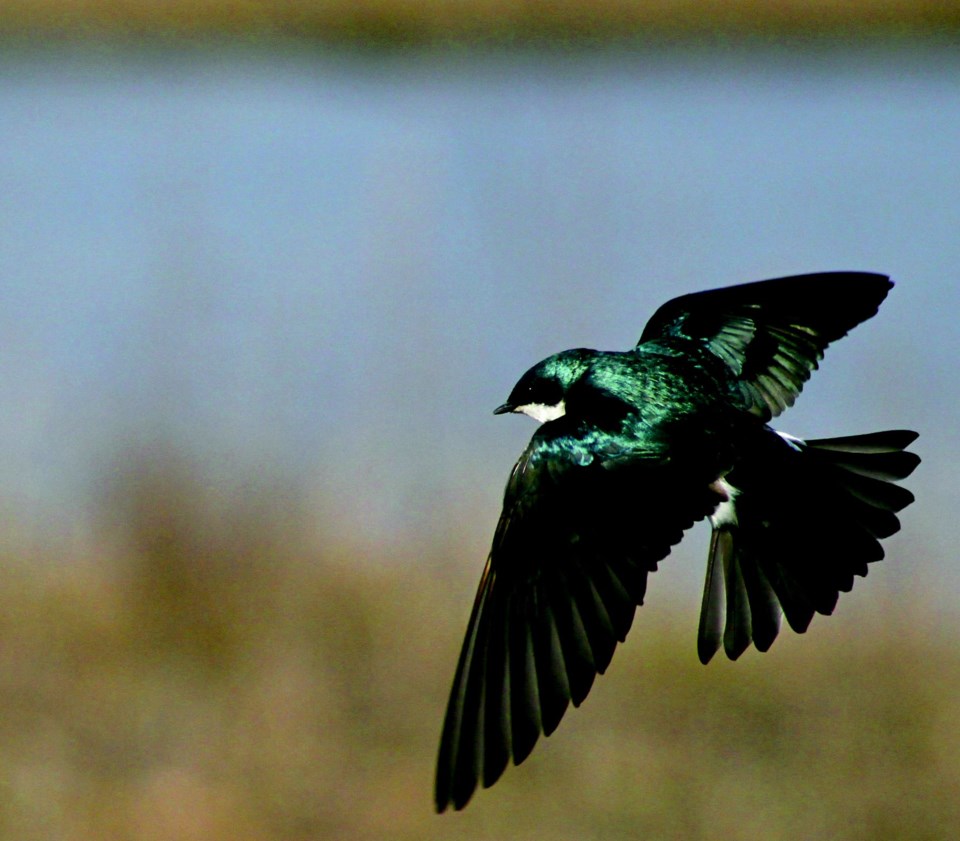No doubt this past week many enjoyed the unseasonably warm weather but why is it so warm so early?
The sights and sounds of the tree swallow (Tachycineta bicolor) were observed at Hope Farm this weekend, which is holding a pattern of early arrival for each year we have been on the farm. Each season the tree swallow and its later arriving cousin the barn swallow (Hirundo rustica) have arrived at our farm one week earlier than the previous year per our recorded observations.
As the tree swallow arrived, its primary food also arrived. The mosquito much to my chagrin has now become the buzzing in my ears at night while trying to sleep.
The tree swallow winters in Mexico, Florida, the Gulf of Mexico, the Caribbean and Central America.
According to the Cornell Lab of Ornithology, the tree swallow is very sensitive to climate change and as spring temperatures have warmed since the 1960s, tree swallows' average date of laying their first egg has moved nine days earlier in the year.
Other early observations on the farm are the return of the warbling sound of the Columbia spotted frog (Rana luteiventris) and the humble bumble bee.
The current weather patterns are now resembling those of the El Nino season of 1997-1998, which was the largest in recorded history until data came out in November displaying the current El Nino to be the largest in recorded history.
Many British Columbians are not complaining of the lack of winter this year nor are they in regards to the early summer weather we are experiencing but this may change as the season moves forward.
According to the NOAA and Environment Canada this year, it is predicted that we will have above average rainfall in coastal regions of B.C. and possibly in the Prince George region. Above average temperatures are also predicted.
In 1998, the hurricane season was one of the deadliest in 200 years with over 11,000 deaths in Central America. Should we be on the lookout for the next Katrina?
If predictions hold, this year may be a good year for producers in the Prince George region, though making hay for cattle operations may prove to be difficult.
We are no doubt excited and anxious to see what the weather proves to show us this year (as a farmer the weather decides my livelihood).
This year, we will be doing several experiments on the farm to boost the season's capabilities, such as growing tomatoes out of the greenhouse, planting one bed of carrots four weeks early with the protection of a frost cloth and growing an early crop of potatoes with a frost cloth.
Last season, we experimented by planting one last crop of carrots just a couple weeks before there was no possibility of going into the field for the rest of the winter. We covered the carrot seed in two layers of frost cloth and hoped for the best. With the lack of a good insulating layer of snow, I frequently looked at the field through the frost covered windows in winter wondering, "Will they make it?" This experiment has proved itself as a recent check in the field showed early germination and living plants. I must remind myself it is April and anything is possible that may kill of the plants before the "true" summer appears.
If these experiments prove worthwhile this may mean an earlier and more productive season on the farm.
As I sit writing this article in my newly acquired farmers' tan while observing a few mosquito bites, the future of stable climate patterns looks bleak and I often wonder what science denying climate change refusing individuals are now thinking after this past week's weather -- probably how awesome Donald Trump is and that quading season is going to start early.
Le sigh.



